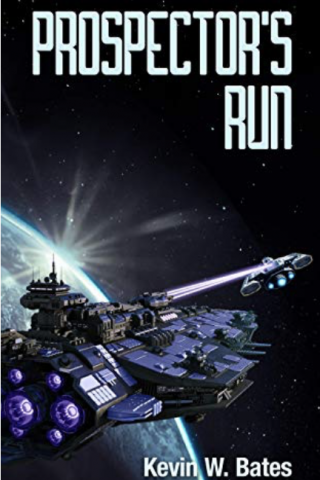
Description:
“Birthright 2012” is a personal account of my voyage throughout Israel. The outer story incorporates humor, science, history, and my own observations as I explore the land. It should appeal to the armchair traveler who would like to experience the country but is unable to and also to anyone who would like to learn more about this bastion of democracy in the Middle East. Beneath this outer story there exists an inner story. Filled with humor, philosophy, and poetry, this underlying aspect of the book follows my own personal voyage to self-awareness. “Birthright 2012” chronicles the daily activities of my University of Miami Birthright trip to Israel. Each chapter highlights a single day’s events, activities, and sights. The book is chock-full of deep personal insights, light humorous anecdotes, witty observations, and scientific and historical facts. I hope you will follow me on my journey through the Land of Milk and Honey.
Book Rating: G

e x c e r p t
Group: SA-394
Dates: From 12/14/12 to 12/24/12
Birthright 2012: A Voyage into the Heart and Soul of Israel
Or How I Found My Heritage and Myself in the Land of Milk and Honey
By Andrew Blitman
*Out of respect to the participants of this incredible trip, names have been changed to guarantee their anonymity.”
ISBN-13: 978-1492312888
ISBN-10: 1492312886
© 2012 Andrew Blitman. All rights reserved under a Standard United States Copyright License.
Day Four, Part One: The Soldiers Arrive/ “White Fire”
The Daily Word “Mikhalim” – Soldiers
Monday, December 17, 2012
I woke up early, around 7:30 AM. I had to leave early, because my group was off to Jerusalem. At 8:30 AM, our bus arrived at IDF headquarters. Eight Israeli soldiers joined our group. They were valuable additions who quickly became the most influential part of the experience.
One by one, they boarded the bus. As they did, they humbly introduced themselves in eloquent English. Not bad for a second language, I thought. “Maybe they can teach us Americans a thing or two,” I said to myself. With great cheer, they told us their names:
1. Evan
2. Avital
3. Gal
4. Nava
5. Hadassah
6. Balfour
7. Arman
8. Miki
In a flash, our group grew by eight. This also changed the countdown; from this day forward, we had to count to 48. Once the soldiers found their seats, Manna asked for silence. “Count-off!” she exclaimed.
“One!” Eric yelled from the back of the bus. “Two!” David responded. “Three!” I chimed in. By #15, the countdown lost its steam. By the time we reached 41, it was a complete disaster. Some of us said our numbers in English; others said theirs in Hebrew. In the midst of this total communication breakdown, we shared a hearty laugh (at Manna’s expense).
We tried once more, to similar failure and foolishness.
Luckily, the third time was the charm. We could finally leave, and we did.
At 10:00 AM, we passed Hebrew University and had arrived at our next destination—a memorial on a precipice that overlooked Jerusalem. From our vantage point (or belvedere), I saw the Old City divided. I saw the Muslim Quarter and the mosque that made it famous—the Temple Mount. I saw the Christian Quarter, which was split “equally” between the Catholic Church, the Greek Orthodox Church, and the Russian Orthodox Church. Architecture told a different story; Russian minarets dominated the Christian skyline. Next was the Armenian Quarter, which belonged to a sect of Christianity distinct to the Middle East. Finally, I saw the Jewish Quarter, home of the Tomb of King David and the Western Wall—the holiest place in Israel. Everyone took pictures.
The memorial was composed of Jerusalem stone, a type of rock that, according to the Rabbi, is the combined essence of heaven and earth from which all of Jerusalem was built. In this sacred structure of sacred stone, we the students would introduce ourselves to the soldiers and forge a sacred moment that transcended time, space, and memory.
But, first, we locked our hands together and formed a circle. At its center stood the Rabbi, who reminded us about the importance—and honor—of standing in Jerusalem.
“For 2,000 years our Jewish ancestors have prayed so that, one day, their children would return to this place,” he explained. “It is the city most-mentioned in the Torah; the oasis in the desert where Solomon built his temple and the capital of King David’s Empire. We travelled through Tiberias, the Holy City of Water; and explored Tsfat, the Holy City of Air. Hebron, which lies in the East, is the Holy City of Earth. Today, we find ourselves in Jerusalem, the most sacred hearth of them all—the Holy City of Fire.”
“What makes fire special?” the Rabbi asked. “What happens when you spark a match?” he continued. “When you use a candle, the wick begins to glow and an ember is born. This embryonic flame emanates heat and light,” he proceeded. “Such power can be used to create or destroy worlds. Fire is at the heart of Judaism because it does not lose strength when it is shared. In fact, the opposite process occurs.”
“Have you ever heard this saying—‘that joy shared is doubled, sorrow split is halved?’”, the Rabbi asked. “Fire, however, is not like joy. It is joy!” he whipped up a whirlwind. “When fire is shared, the light doubles and intensifies. It only takes one righteous flame to ignite a universe of dead-wicks! In Judaism, the human body is a shell of clay. Within that earthly husk there exists a spark of the divine—a soul or holy fire. As Jews we are commanded by the Torah to hone our spiritual energy through prayer; once we do, we must share that fire—the essence of G-d—with the world!”
“The Torah, too, is made of fire.” The Rabbi bellowed, “You might have heard me say this before, that the Torah is black fire on white fire. The Torah’s words, Hebrew text written in ink, compose the black fire. This black fire is all that we can see, all that we can decipher with what we already know.”
“‘Where’s the white fire?’ you might ask. The answer to that question lies in the parchment, the material on which the text is inscribed”, he explained. “The black fire, in fact, obscures the white fire.”
“What does this all mean?” the Rabbi concluded. “It means that we must cast aside earthly knowledge—the black fire that represents everything we already know—in order to comprehend the divine intellect—the distant white fire that represents everything unsaid.”
“Your great-grandfather’s grandfather’s grandfather’s grandfather prayed to G-d so that, one day, you would tread on Jerusalem’s sacred ground. In 1948, a generation of Holocaust survivors fought valiantly to make those prayers a physical (if not metaphysical) reality,” he asserted. “Savor your time here,” he implored us. “While you’re in Jerusalem, remember their sacrifice. Harness your inner fire and use it to illuminate this dark, dark world. Follow the words of the late Henry Chaucer, who said that, if you become the person G-d meant you to be, you will set the world on fire. Jerusalem, the Fire manifest, is the place where heaven and earth meet. As you walk where G-d dwells, remember the importance of what is said and not said. Use this wisdom to find the light in your life.”
I was taken aback by the Rabbi’s unquestionable profundity. “Jerusalem, if I forget you,” I thought of Matisyahu, “let my right hand forget what it’s supposed to do.” No one said a word because everyone was lost in self-reflection.
After a moment of silence, the IDF icebreaker session began. The students split into eight groups of five, the equivalent of one group of eight per soldier. The soldiers rotated between those groups every five minutes.
We asked them simple questions at first, like “Where were you born?” and “Do you have any plans after the military?” As for the latter, all of the soldiers wanted to travel—whether to the United States, to South America, to Australia, or to somewhere else—after their military service ended.
We then progressed to more difficult questions like “What kinds of music do you like?” and “Do you have any hobbies?” I soon found out that Gal liked hip-hop and classic rock; that Miki hated rap and liked to play the drums; that Arma played the bass guitar and had a passion for scuba diving; and that Hadassah loved to sing and dance.
They returned our questions; as I answered them I saw myself in the soldiers. Our parallel worlds collided. I realized that distance met nothing; at the end of the day, we were all the same.
At 11:00 AM, we left the memorial for the Dead Sea. There, we would douse ourselves in mud and water, and learn of their therapeutic properties.
Day Four, Part Two: A Tale of Ahava and the Dead Sea
Monday, December 17, 2012
At 12:30 PM, after passing through a security checkpoint, we reached our destination—the Ahava factory. The Ahava Company, a subsidiary of the Israeli government, chemically alters Dead Sea mud into cosmetic gels and lotions. Our tour of Ahava headquarters consisted of a poorly-made movie and unrestricted access to the company store.
Thankfully, the tour passed by quickly; because we survived it, we could freely access the Dead Sea. At 1:30 PM, we boarded the bus and promptly left for the Dead Sea.
Once we moved from the Ahava factory grounds, the Dead Sea revealed its natural majesty. On the horizon, limestone mountains white as chalk eclipsed the sun; their invisible rain-shadows haunted the land like ghosts. Erosion ruled this desert; the wind reigned supreme wherever rock was exposed. Numerous weathered trenches transected the shoreline like roads; the rivulets that formed them flowed gently into the Dead Sea.
Yet, even among these geological ruins life existed. Around the rivulets, for example, papyrus reeds accumulated and formed fertile, green marshes. Camels and ibex grazed on these plants; although they were a rare sight, they made their presence known.
Farther from shore, orchards of date palms basked in the desert heat. These trees (some are 75 feet/23 meters tall) produce dates (dry fruits similar to figs) and play an essential role in Middle Eastern life. For more than 8,000 years—before the days of Pharaohs—people have harvested dates. To this day, Arabs and Israelis alike continue to do so. They are the lifeblood of an industry that generated $265 million for Israel in 2011.
We drove closer to the Dead Sea. “Yam Hammelach” in Hebrew, the Dead Sea is actually a giant salty lake. However, it was not always this way. 12,000 years ago, the Dead Sea and the Sea of Galilee were one united freshwater entity known as Lake Lisan. This prehistoric body of water was very deep; ancient lake levels exceeded modern ones by as much as 820 feet (250 meters).
At the end of the last Ice Age 10,000 years ago, Lake Lisan experienced intense seismic activity. Earthquakes shook the giant lake until it emptied. Eventually, Lake Lisan split into the Sea of Galilee and the Dead Sea. At the same time, Israel’s temperate climate gradually grew hotter and drier. Under these new conditions, the Dead Sea, which was once a freshwater lake, began to evaporate.
Over time, the Dead Sea has lost much of its surface area and depth to evaporation. As the freshwater evaporated, it left minerals and salts behind. The water that remained absorbed those compounds and grew saltier—so salty that not even brine shrimp can live in it.
Today, the Dead Sea is 8.6 times saltier than the ocean; in fact, 33.7% of Dead Sea water is salt. Though the landmark continues to evaporate, it is still somewhat stable at 42 miles (67 kilometers) long, 11 miles (18 kilometers) wide, and 1,388 feet (423 meters) deep. The Dead Sea is also the lowest point on Earth. It lies 1,320 feet (400 meters) below sea level, far below Death Valley.
Map of the Dead Sea region, with original extent of Lake Lisan.
Naturally, the Jordan River flows into the Dead Sea, which is located on the border of Israel and Jordan. However, the River has been diverted by the Israeli and Jordanian governments to meet the region’s growing demand for fresh water. Without its main tributary, unfortunately, the Dead Sea loses 3.3 feet (1 meter) of water each year. Without intervention, the Dead Sea will completely evaporate by 2060.
By 2:15 PM, we had arrived at the Dead Sea. Immediately, I switched into my bathing suit and flip-flops. However, as I walked toward the lake I discovered that my shoes were not enough.
The shore was deceptive, I noticed. What looked like smooth sand from afar was actually a layer of large, round stones. As I navigated the rocky beach, I felt every single step. Flip-flops or not, there was no difference.
I eventually stumbled into the water, where I found soft silt. The Dead Sea was cold, transparent, and incredibly salty; so salty that it made floating easy. My friends and I effortlessly bobbed on the surface like human buoys. It was impossible to sink. Bystanders photographed us while we struggled to balance ourselves in the water.
After a while, I returned to shore, keen on getting muddy. When I left the water I discovered that the Dead Sea had coated my skin with a thin layer of brine. I brushed it off and walked toward the mud.
The Dead Sea is famous for its charcoal-colored mud, which supposedly has therapeutic properties. According to Ahava, the sediment grains can activate intercellular messengers in the skin that facilitate the healing of cuts and scrapes. They can also exfoliate (remove contaminants via micro-abrasion) clogged pores, hence Ahava’s extensive line of acne cleansers, aftershaves, and face washes.
As soon as I lathered in the mud, my skin felt different—it felt nourished. A tingling sensation percolated across my body as the intracellular messengers took effect. I rubbed the sediment over my head, chest, and limbs; immediately I detected in the hot, dry air the exfoliation of my skin. As I stood in the sun, the mud’s black pigments absorbed its heat; I felt relaxed and warm when I should have had the chills. It was the best hour of my life.
At 3:30 PM, we left the Dead Sea for the nearby Ein Gedi National Park, where we bathed under an alpine waterfall.
As we ascended the mountains of Ein Gedi, I saw tall acacia trees and wrangled oaks. After the waterfall, when we descended those same mountains, we were surprised by a herd of hungry Nubian ibex, mountain-climbing antelope that grazed on the thorny acacia branches.
We left Ein Gedi National Park at 4:15 PM for the Ein Gedi IYHA, a youth hostel by the Dead Sea’s northwestern shore. Later that night, we discovered that the soldiers had prepared an activity for us. Festivities—consisting of Israeli trivia, blind food tasting, games of “Spontaneous Ten” in Hebrew, and a pageant of song and dance—ensued. We then retired for the night, because Masada awaits.











